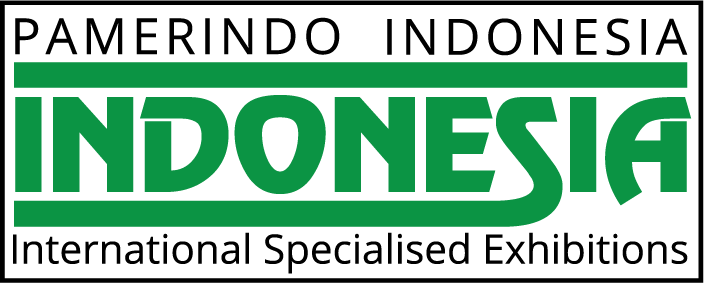JAKARTA (TheInsiderStories)— President Joko Widodo launched Making Industry 4.0 roadmap as baseline the country’s economic development during 2019 to 2030. So far the country lags behind regional peers in implementation of industry 4.0.
Industry 4.0 is a name for the current trend of automation and data exchange in manufacturing technologies. It includes cyber-physical systems, the Internet of things, cloud computing and cognitive computing.
The term Industry 4.0 was firstly introduced by German scientist and business advisors in 2011. It refers to an advanced cyber-physical manufacturing process. It includes four key technology, namely Artificial intelligence, internet of things, advanced robotics, wearable or augmented reality or virtual reality, and 3D printing.
“My presence here to launch a movement of making Indonesia 4.0. This is a government program respond to the industrial revolution in the world,” Widodo said at the Making Industry 4.0 Launch on March 4.
President said based on the McKinsey Global Institute study in 2015 the industrial revolution 4.0 will impact 3,000 times more than the first industrial revolution. McKinsey also reported the pace of change will be 10 times faster, and the impact would be 300 times larger.
Later in 2017, He explained, McKinsey predicted industry 4.0 will eliminate 800 million jobs worldwide between now to 2030 because it was taken over by robots and machines. He hopes the implementation of industry 4.0 will bring Indonesian economy could achieve a top 10 global economy by 2030.
“Our net export figures also could be back to 10 percent of GDP, opening of the 10 million new jobs in 2030,” he stated.
As a first step in running making Indonesia 4.0, Widodo said, Indonesian Government will focus in five areas namely food and beverages, textiles, automotive, electronics and chemicals. This five sectors, He added, is expected to bring substantial leverage effect in terms of contribution to the competitiveness of Indonesia towards the top 10 of the world economy in 2030.
The roadmap consists of 10 cross-sectoral national initiatives to enhance manufacture sectors, including improving the flow of goods and materials, building a comprehensive and cross-industry industrial zone map, accommodating sustainability standards, empowering small and medium industries, building national digital infrastructure, foreign investment boosting, improvement of human resource development, ecosystem innovation development, incentive for technology investment, and simplification of rule and policy.
In his opening speech, Industry Minister Airlangga Hartato said the implementation of Making Industry 4.0 will be able to drive Indonesian economic growth of 1-2 percent per year from currently in the range 5 to 7 percent in 2018-2030. Furthermore he said, the manufactures will contribute around 21-26 percent of GDP by 2030.
Indonesia’s targeted to improve the ratio of net export to GDP from 3 percent to 5-10 percent and create 7-19 million employment in both manufacturing and non-manufacturing sectors by 2030.
Lags Behind
However, Indonesia lags behind Southeast Asia peers on implementing industry 4.0. Singapore clearly leads the ASEAN countries in terms of initiatives for comprehensive Industry 4.0 strategy focusing on capability development, industry transformation, and re-skilling workforce.
Singapore is among the 25 countries best positioned to benefit from Industry 4.0, according to a report from the World Economic Forum. The country planned to invest SG$3.3 billion over four years for research and development in advanced manufacturing and engineering and allocate SG$4.5 billion to develop individual transformation roadmaps for 23 industries across 6 clusters.
Thailand and Malaysia also already become a leader in the legacy initiative to improve fourth industrial revolution. Thailand already entered early stage implementation of Industry 4.0 in 2016 and created a fund of 280 million baht to sponsor and support local startups. Malaysia already has an agreement with Chinese and German players for investments in robotics and manufacturing.
The implementation of Industry 4.0 in Indonesia faces significant obstacles. Indonesia currently in the lower position on the three investment sectors that can boost Industry 4.0, namely ICT, infrastructure, and human development investment among regional peers.
In 2016, Indonesia’s ICT spending was only 1.1 percent of GDP, per capita infrastructure stock was only 50% of Malaysia, and low government education spending per capita was only 20% of Malaysia. These low spending will lead to the lower productivity and weaken net export.
In addition, Institute for Development of Economics and Finance already warn the government of the high risk of deindustrialization. “Indonesia’s industry sector is at its lowest point over the last two decades,” INDEF’s researcher Ahmad Heri Firdaus earlier said as quoted by Tempo.
Indonesia started to boost industrialization since the mid-1980s after oil dropped and continued until the hit of Asia financial crisis in 1997. When Susilo Bambang Yudhoyono took office in 2004, the country’s economy was dominated by the raw commodities exports, thanks largely to a hungry China. The domination remains until now.



